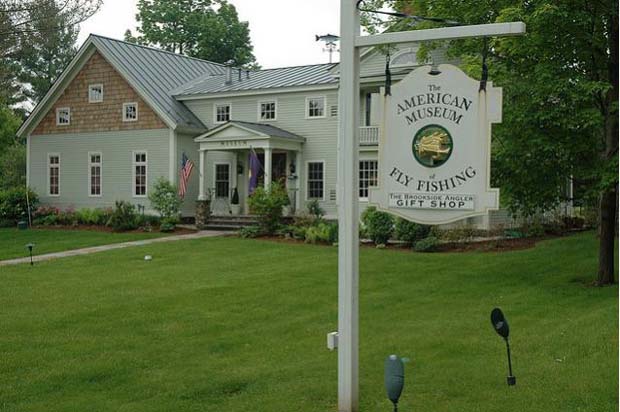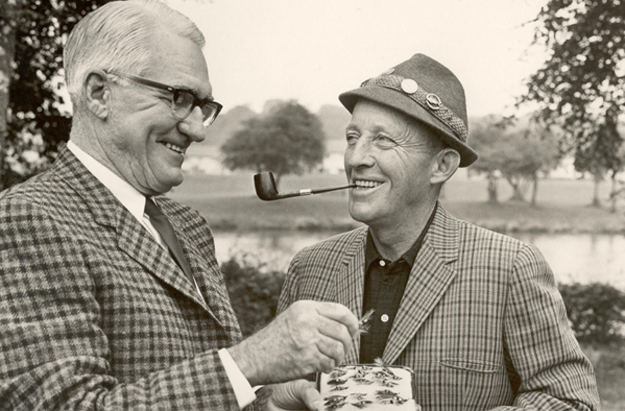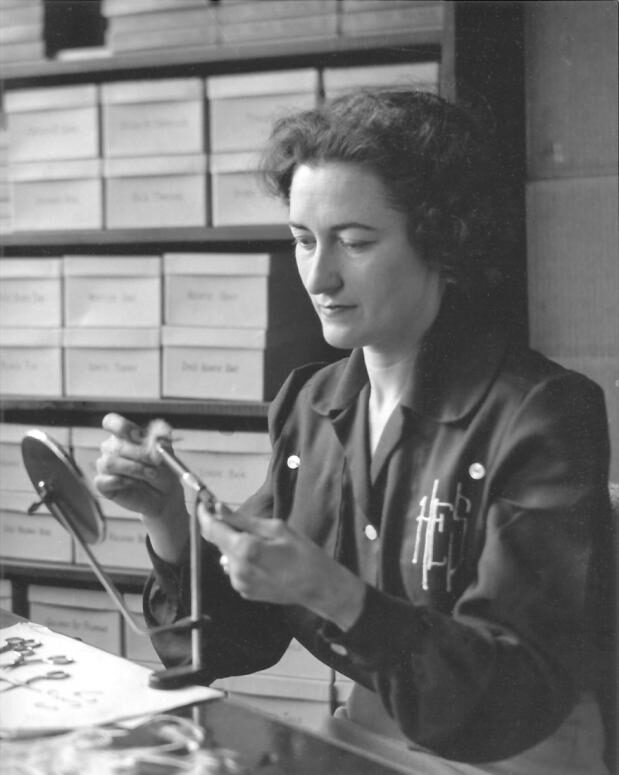
The American Museum of Fly Fishing
In 1985, the American Museum of Fly Fishing established the Fly Fishing Hall of Fame Committee (HOFC) and has inducted 70 members who have significantly enhanced the culture of fly fishing.
Here are a few of those people who have contributed to making fly fishing a better part of our lives. —

Joe with a famous crooner, Bing Crosby.
Joe Brooks [1901–1972 ]
Joe Brooks, the acknowledged dean of international outdoor writing, fly fished every corner of the world. He was the fishing editor of Outdoor Life magazine, featured on ABC’s American Sportsman TV series, wrote thousands of articles and authored ten books including: Trout Fishing, Saltwater Fly Fishing and The Complete Guide to Fishing Across North America.
His teaching generosity was unmatched and his influence is felt by all anglers including such legendary fly fisherman as Lefty Kreh, Stu Apte and Jimmy Albright. Dozens more of today’s greatest anglers have continued to pay forward Joe’s gift of the love of fishing.
Brooks suggested Lefty Kreh start writing about the outdoors for local Maryland papers, taught him to fly fish and pushed him to become the tournament director for the Miami Met Fishing Tournament. When asked what he could do to repay Joe for his kindness and counsel, Joe replied, “Lefty, just share with others what I have shared with you.” According to Lefty Kreh, “Joe Brooks was one of the best known American fly fishermen for many, many years…and my biggest influence”.
Brooks was the Chairman of Fresh Water Committee of the Maryland Fish and Game Association. His interest in youth education blossomed with the founding of the youth educational organization known as The Brotherhood of the Junglecock, a group he remained active in throughout his life.
Brooks believed in starting fly fishermen at a young age and with the assistance of J. Hammond Brown and Frank Burt Smoot, he developed “The Junior Outdoorsman”. It was published by the Maryland Fish and Game Association and was targeted to young boys to teach them about fishing and conservation.
Considered one of the first modern saltwater fly fishing pioneers, Brooks developed the famous “Blonde” design of streamer flies that worked both in fresh and saltwater. He was one of the first to angle for bonefish with a fly and his subsequent articles helped create an entire new fishery in Florida and the Bahamas.
An early advocate for light tackle angling, Joe believed strongly in using lighter leaders and tippets, especially as the technology for manufacturing synthetics was improving. Jimmy Albright said, “Joe was a traditionalist. The notion that you should over-tackle a fish was simply not in the cards.” Therefore, it is not surprising that Joe Brooks would write about the time he fished with Stu Apte off Little Torch Key when Stu caught one of his many world-record tarpon on 16-pound test tippet.
Joe Brooks died of a heart attack at the age of 71, while wading in one of his favorite trout rivers, the Big Hole in Montana, but he is still connected to every fly fisher in the 21st Century and that connection will last forever.

Helen Shaw.
Helen Shaw [1910–2007]
Helen Shaw learned fly fishing from her father when she was a child in Wisconsin. During her senior year of high school, she supported herself as a fly tyer and, by age 20, opened a fly tying business in Sheboygan. Requests to mass-produce flies were turned down because Helen was never willing to sacrifice quality for quantity. Her flies satisfied the needs of some of the most discriminating fly fishers, including President Herbert Hoover, and she came to be known as a most meticulous fly tyer. In 1953 she closed her Wisconsin store and moved to New York to marry Field and Stream art director Herman Kessler. In 1963 they collaborated on Helen’s first book, Fly Tying, and set a new standard in fly tying self-study. Helen did the writing, and Herman, the photography. As a result of this single title, Helen taught thousands to tie flies. Two more books followed, Flies for Fish and Fishermen, and Fly Tying: Materials, Tools, and Techniques. A true pioneer in fly fishing, Helen perfected her craft. She first tied flies for the fish and then for the fisherman.
Read more about Shaw here . . .
About:
The American Museum of Fly Fishing was established in 1968 in Manchester, Vermont, to research, preserve, and interpret the treasures of angling history.
The Museum is a repository for and conservator to a collection of thousands of angling and angling-related items. The exhibitions and exhibits produce an evolution of fly fishing dating as far back as the sixteenth century.
Rods, reels, flies, tackle, art, photographs, manuscripts, and books form the Museum’s permanent collection.
The American Museum of Fly Fishing
4104 Main Street, Manchester, VT 05254
Mailing Address:
P.O. Box 42, Manchester, VT 05254
Telephone:
802-362-3300
Fax:
802-362-3308






